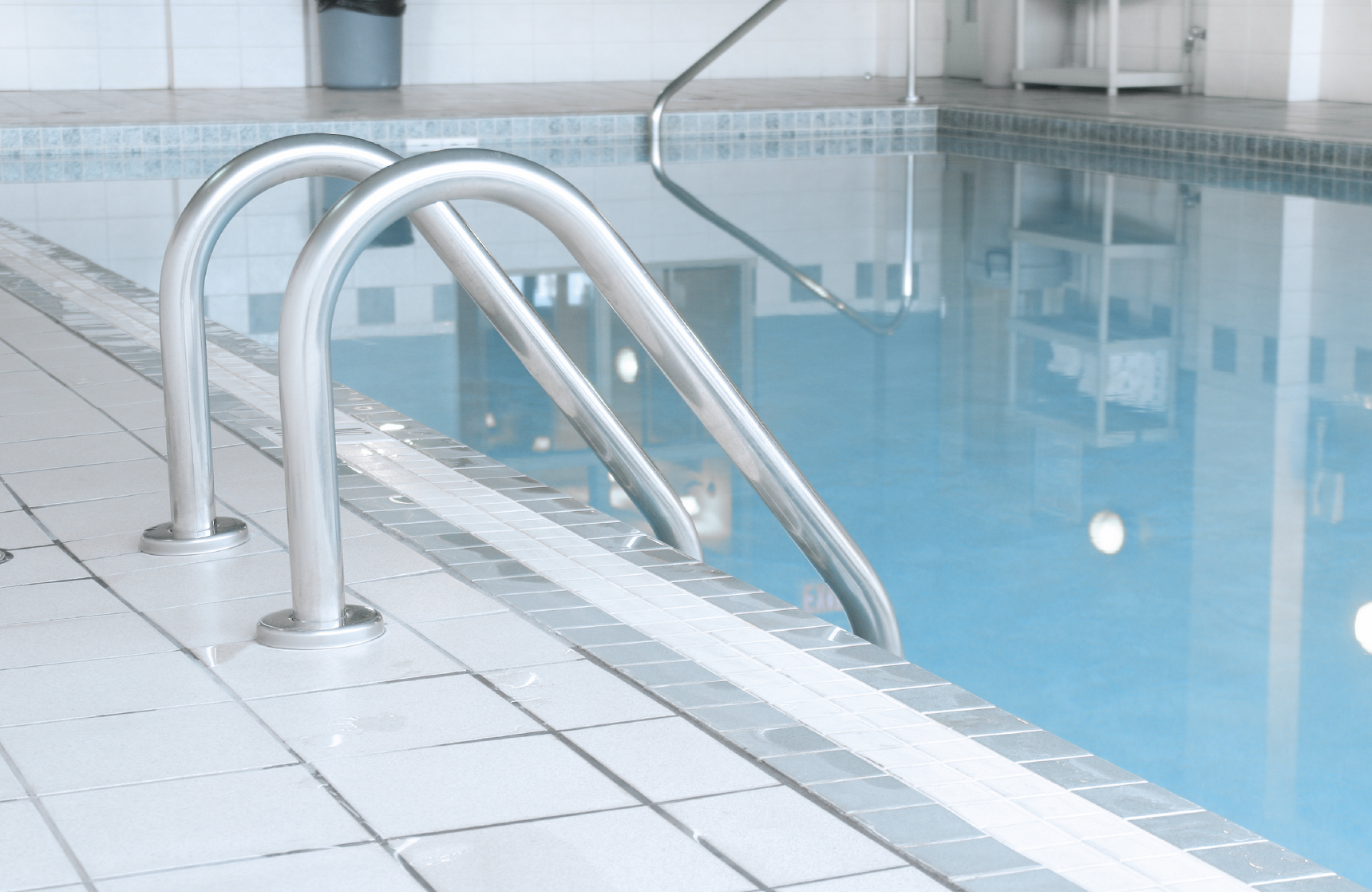
Methods to Control Humidity
Humidity must be controlled to protect and preserve an indoor-pool building envelope during the heating season. There are two general methods to do this. The first method is to bring in relatively dry outdoor air and exhaust the moist air from the space. The outdoor air is heated with natural gas to maintain the space temperature. This displacement of moist pool area air with dry outdoor air removes moisture from the space and maintains a sufficiently low relative humidity of typically 50-60%.
The second method to control the space humidity is using mechanical cooling to dehumidify the air. The typical residential basement dehumidifier works on this basis. Air is cooled down with a cooling coil, which condenses moisture out of the air. The air must then be reheated up to desired discharge air temperature. This is usually accomplished with the heat rejected from the refrigeration compressor and evaporator coil that dehumidifies the air. Any excess heat rejected by the compressor can also be used to heat the pool water if necessary.
Energy Comparison
So how does the energy use of these systems compare? With the ventilation method, natural gas is the dominant energy cost. Fan energy costs are minimal by comparison. A heat recovery system can be added to this option to capture heat from the exhaust air and transfer it to the incoming outdoor air. This will reduce the energy required to heat the supply air by 50-70%. Pool water is heated by conventional means, typically with a natural gas fired boiler or water heater.
With the mechanical dehumidification system, refrigeration energy is the dominant energy user. The heat rejected from this system is used to reheat the air after cooling and to heat the pool water. Supplementary heat will often be required from another source to maintain the air and pool water temperature.

Which System is More Efficient
The answer to this question is: it depends on how your pool is used. Using ASHRAE Standard 62, Ventilation for Acceptable Indoor Air Quality, pool buildings should be ventilated with 0.5 cubic feet per minute (cfm) per square foot of pool water plus deck area (during occupied periods). For example, a “short” course pool with six lanes will have about 3,400 square feet of pool surface area and approximately equal deck area. This facility would require 3,400 cfm per ASHRAE 62. As illustrated in the chart, this volume of outdoor air will result in sufficiently low humidity during all heating season weather in the upper Midwest.
During occupied periods there is no need for mechanical dehumidification. Humidity remains below the setpoint, except for possibly some very humid summer conditions. However, humidity poses no threat to the building envelope in the summer because there is negligible chance of condensation on building indoor surfaces then.
Mechanical dehumidification can save energy when the pool is not in use and when the pool cannot be covered with a pool blanket. The mechanical system will use more electricity but there is no ventilation heating required when unoccupied because no outdoor air is required. Furthermore, the heat rejection from the mechanical system is used to heat the space and pool water.
There are many factors that affect the total energy input required with each system, and as such each facility should be analyzed on a case-by-case basis.



